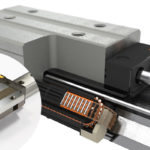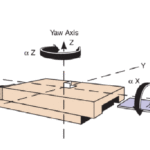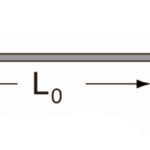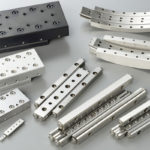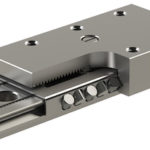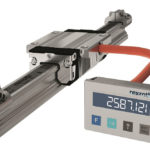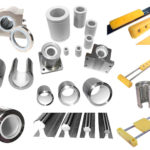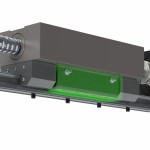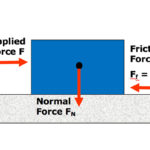NB Corporation’s EXRAIL linear guide has more rollers in less space than other linear bearings, which increases load capacity and disperses the load more evenly. It has longer rollers for greater contact surface and less contact pressure. In comparison to presently available linear guides, the EXRAIL slide guide provides smoother movement. It uses multiple small […]
Slides + guides (all)
Motion basics: How to define roll, pitch, and yaw for linear systems
Linear guides and systems — including Cartesian robots, gantry systems, and XY tables — are typically subjected to both linear forces due to downward, upward, and side loads and rotational forces due to overhung loads. Rotational forces — also referred to as moment forces — are typically defined as roll, pitch, and yaw, based on […]
When do you need to consider thermal expansion in linear guide systems?
Most materials used in linear systems have a positive coefficient of linear thermal expansion — that is, when their temperature is increased, they expand in length, and when their temperature is decreased, they contract in length. One notable exception is Kevlar, the aramid from DuPont, which is sometimes used for tensile cords in toothed belts. […]
Slide ways for precise motion control
NB Slide Ways are non-recirculating linear motion bearings used primarily in optical and measurement equipment where high precision movement is required. The SV style consists of two roller cages with precision rollers in a cross arrangement and four rails with V-shaped raceways. The SVW has one rail with V-shaped grooves on both sides and two […]
Industry’s smallest slide with anti-cage creep technology
PM introduces the next generation of miniature slides: the MSR. This product has been developed according to the rising demand for smaller, compact linear slides for use in dynamic and accurate applications. The miniature slides are developed for increased output in micro-assembly machines and pick-and-place machines. The MSR miniature slide can also be used in […]
IMScompact: Guidance and measuring system requires no additional space
With its sensor system completely integrated in the ball runner block, Bosch Rexroth’s new IMScompact integrated measuring system determines the exact position with a high repetition accuracy of ±1 μm. IMScompact enhances the range of linear guides and is available in sizes 15, 20 and 25, making the measuring system for ball rail systems a […]
New flanged linear bushings available from Samick
Manufacturers are faced with the enormous challenge of minimizing risks in their manufacturing processes while at the same time lowering costs and improving product quality. Flanged linear bushings from SAMICK can meet these customer requirements. Whereas standard linear bushings must be used in combination with casings, flanged linear bushings are directly mounted onto the housing […]
FDA-compliant off-the-shelf linear motion components for urgently needed medical products
In dealing with the COVID-19 pandemic many companies have volunteered or been requested to produce urgently needed medical products such as masks, gowns, and ventilators. Tooling up quickly to produce medical grade products for some companies can bring challenges. In addition to needing FDA-compliant materials that will be used in the actual masks, gowns, and […]
What are rail brakes and when should you use them?
The servo and stepper motors that drive linear motion systems often include a braking function, or, in the case of stepper motors, detent torque that helps prevent the motor (and, therefore, the load) from moving when powered off. But in some applications, a secondary brake is required — either to provide redundancy and meet safety requirements […]
How to reduce the effects of stiction (stick-slip) in linear guides
Unless you’re playing the violin, stiction, or stick-slip, is an unwanted condition caused by the difference between static and dynamic friction between the two surfaces. When stiction occurs in linear guides, it can lead to chattering (“jerky” motion), seized motion, fluctuating torque requirements, or a loss of accuracy in the form of overshooting. What causes stiction? […]

